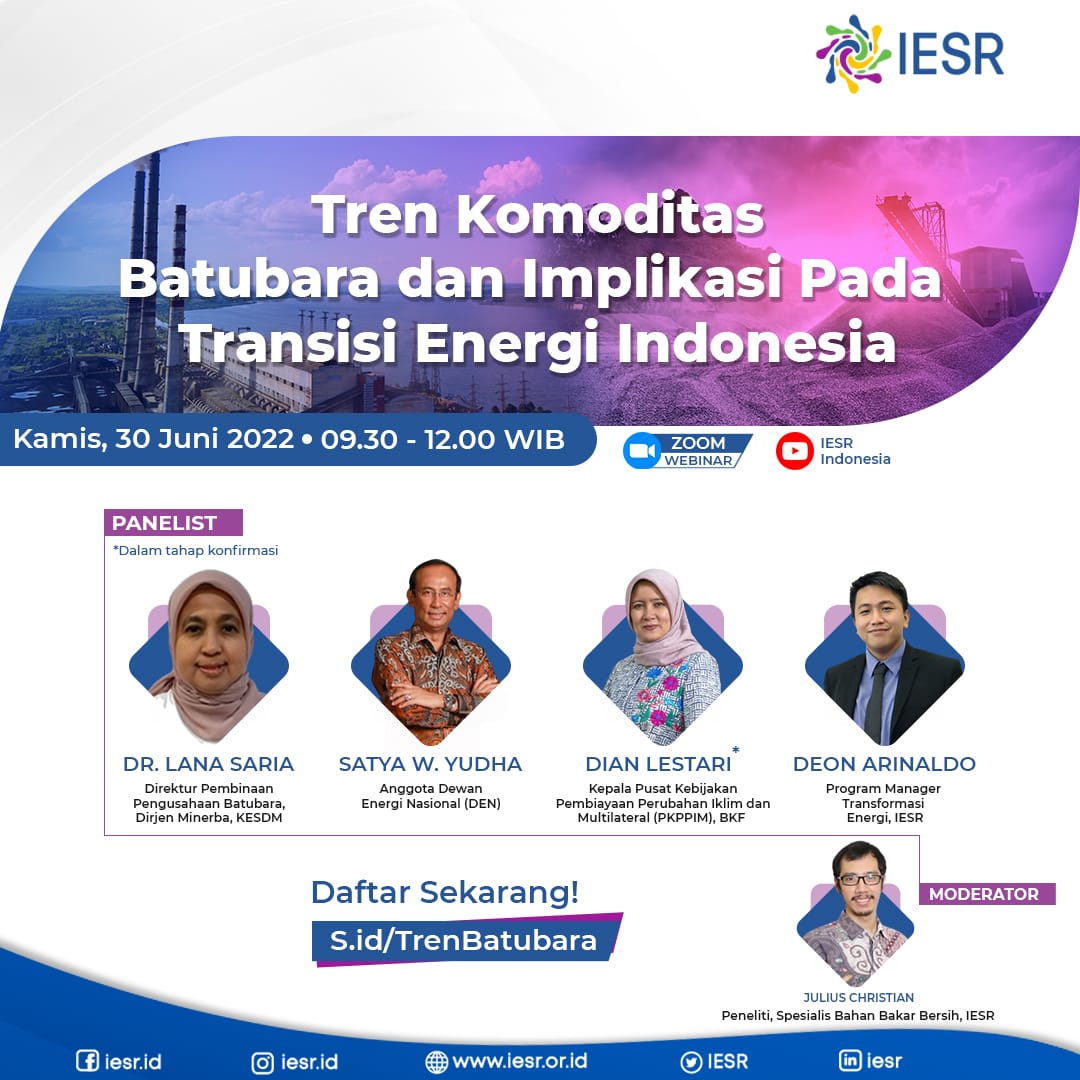
Webinar on Coal Commodity Trend and Implications for Indonesia’s Energy Transition
Playback Recording
Indonesia’s fossil energy mix is still approaching 90% at the end of 2021. Coal’s primary energy mix is the largest until Q3 2021, followed by oil and gas, reaching 38%, 32%, and 20% respectively. If this mix continues, the energy sector will become the largest emitter of emissions in Indonesia before the end of the decade. Coal, as an energy source with a large contribution to greenhouse gas emissions, needs to be consumed as a short-term mitigation strategy.
In the electricity sector itself, the electricity mix from coal-fired power plants reached 66%, and contributed 90% of emissions from the electricity sector in that year. The RUPTL 2021-2030 still plans for 13.8 GW of new CFPPs to be built towards 2030, and has the potential to increase GHG emissions in the electricity sector by 50%. This contradicts the Paris Agreement, which signaled peak emissions were reached within this decade.
On the other hand, the coal sector will also experience commodity price fluctuations in 2022, which are influenced by international market factors and are beyond the control of the state. Indonesia’s reference coal price (HBA) continues to increase from 2021 which was around ~100 USD/ton, reaching its peak in April 2022 at 288 USD/ton. This poses a dilemmatic implication for Indonesia. The state revenue sector from commodity exports experienced a significant increase in line with the increase in coal prices. On the other hand, domestic coal supply was threatened with disruption due to the disparity in domestic selling prices (DMO, which set the highest selling price at 70 USD/ton), thus providing a disincentive for coal companies to supply the domestic market. Although the impact of rising coal prices can be minimized with DMO, this policy also hinders the transition of energy to renewable energy and the decarbonization process because the price of coal energy is “made” cheap and does not reflect the actual situation.
Considering the trend in coal prices that will not change much in the near future, it is important to further examine how the right strategy is to continue to drive the energy transition and decarbonization process in Indonesia.
Presentation Material
Deon Arinaldo – Energy Transformation Program Manager IESR
220630-IESR-Webinar-IESR-Analisis-biaya-pembangkitan-listrik-PLTU-dengan-berbagai-skenario-biaya-dan-teknologi-dekarbonisasi-DA-30-Juni-2022Tri Winarno – Deputy Director for Mineral and Coal Non Tax State Revenue Supervision at Directorate General of Mineral and Coal
220630-Minerba-IESR-Analisis-Tren-Harga-Batubara-dan-Implikasinya-pada-PNBPAhmad Ali Rifan – Policy Analyst PKAPBN BKF
220630-04_Kebijakan-Fiskal-untuk-Mendukung-Transisi-Energi-Menuju-NZE-compressed

